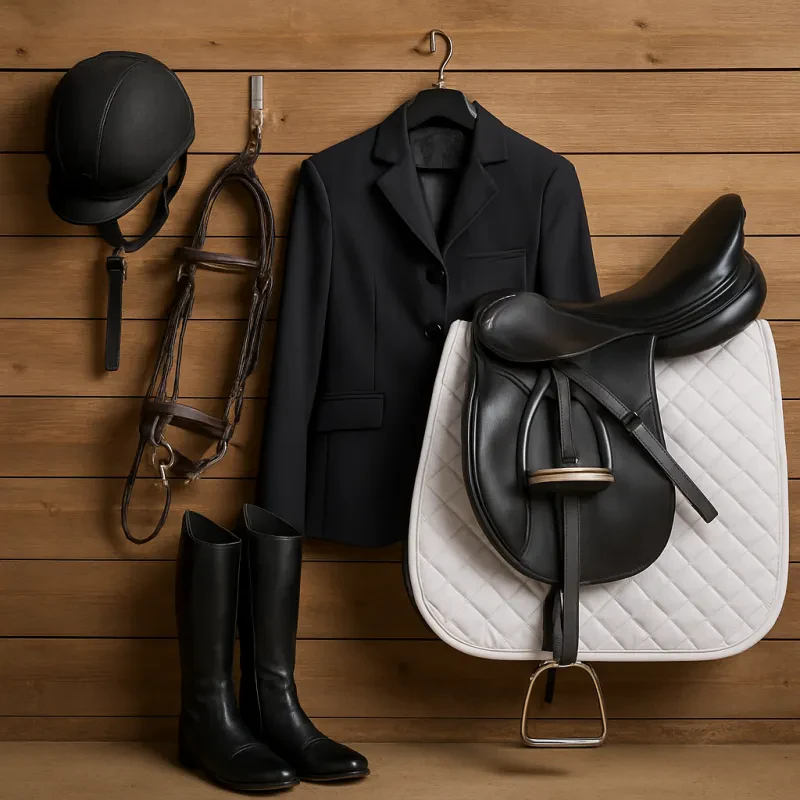Choosing the right saddle size is crucial for a comfortable and enjoyable riding experience. One common mistake many riders make is selecting a saddle based on aesthetics rather than size and fit. It's important to prioritize comfort and functionality over looks when it comes to your saddle.
When determining the right saddle size for you, consider both your anatomy and riding style. A saddle that is too narrow can cause discomfort and pain, while a saddle that is too wide can lead to chafing and rubbing. It's recommended to measure the distance between your sit bones to find the appropriate width for your saddle.
In addition to width, the length of the saddle also plays a key role in ensuring a proper fit. A saddle that is too long can cause pressure points and restrict your movement, while a saddle that is too short may not provide enough support. Take into account your riding position and the type of riding you do when selecting the length of your saddle.
Ensuring proper alignment for optimal comfort
Proper alignment is key when it comes to ensuring optimal comfort for both you and your horse while riding. Failing to achieve the correct alignment can lead to discomfort, pain, and even injury for both of you. One of the most common mistakes riders make is failing to properly fit a saddle to their horse, which can throw off alignment and cause a host of issues.
When fitting a saddle, it's important to ensure that it sits level on your horse's back. A saddle that is too high at the front can cause pressure points on your horse's withers, while a saddle that is too low at the front can cause the rider to slide forward and put undue pressure on the horse's shoulders. Ensuring that the saddle is level will help maintain proper alignment for both you and your horse.
Another common mistake is failing to adjust stirrups to the correct length. Stirrups that are too long can cause the rider's legs to be too straight, throwing off their alignment and balance. On the other hand, stirrups that are too short can cause the rider's knees to be bent too much, again leading to poor alignment. Adjusting the stirrups to the correct length will help ensure that your legs are in the correct position for optimal comfort and alignment.
Adjusting stirrups for correct leg position
One common mistake riders make when fitting a saddle is not adjusting the stirrups properly for correct leg position. Having the stirrups set too long or too short can throw off your balance and alignment, leading to discomfort and ineffective communication with your horse. Properly adjusting your stirrups is essential for a secure and effective ride.
To adjust your stirrups for correct leg position, start by sitting in the saddle with your feet out of the stirrups. Your legs should hang comfortably at your horse's sides, with a slight bend at the knee. The stirrup iron should be level with the bony part of your ankle bone when you lift your leg to the stirrup. If the stirrup is too high or too low, it can cause strain on your knees and ankles, affecting your overall position and balance in the saddle.
Once you have found the correct length for your stirrups, take note of how your leg feels in the saddle. Your heels should be lower than your toes, creating a straight line from your hip to your heel. Your knees should be slightly bent, allowing your lower leg to stay in contact with your horse's sides for effective communication. Proper stirrup adjustment is key to achieving a secure seat and effective aids while riding.
Checking for pressure points and saddle balance
When it comes to properly fitting a saddle, it's essential to check for pressure points and saddle balance. These two factors can greatly impact the comfort of both you and your horse while riding. Pressure points can cause discomfort and even injury to your horse, while an unbalanced saddle can affect your stability and position in the saddle.
One common mistake riders make is assuming that a saddle that looks symmetrical is balanced. To check for balance, place the saddle on your horse's back without a pad and see if it sits evenly. You can also run your hand along the underside of the saddle to feel for any uneven pressure points. Make sure to check the saddle both at a standstill and while your horse is in motion, as the fit may change.
Another important aspect to consider is making sure there are no pressure points on your horse's back. Pressure points can cause soreness, stiffness, and even lameness over time. To check for pressure points, look for any areas where the saddle is digging into your horse's back or causing excessive rubbing. Pay close attention to the withers, shoulders, and loin area, as these are common trouble spots.


